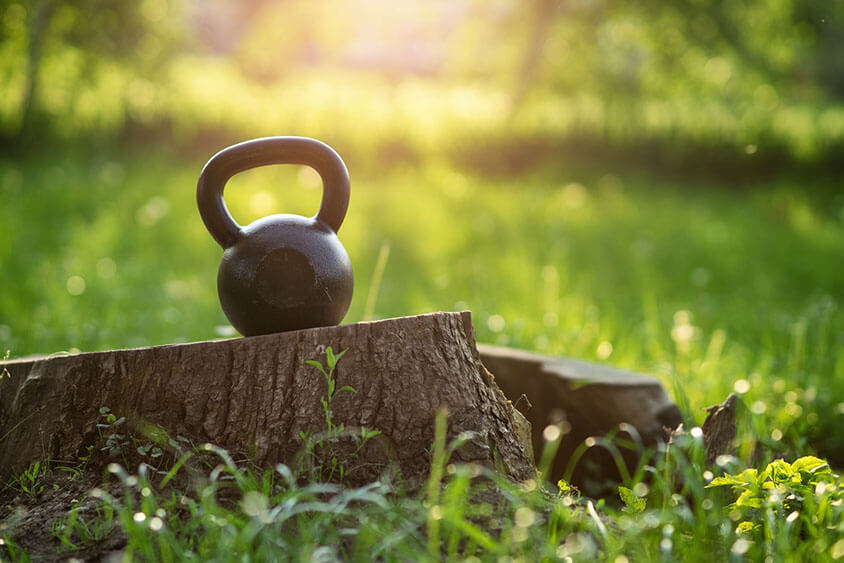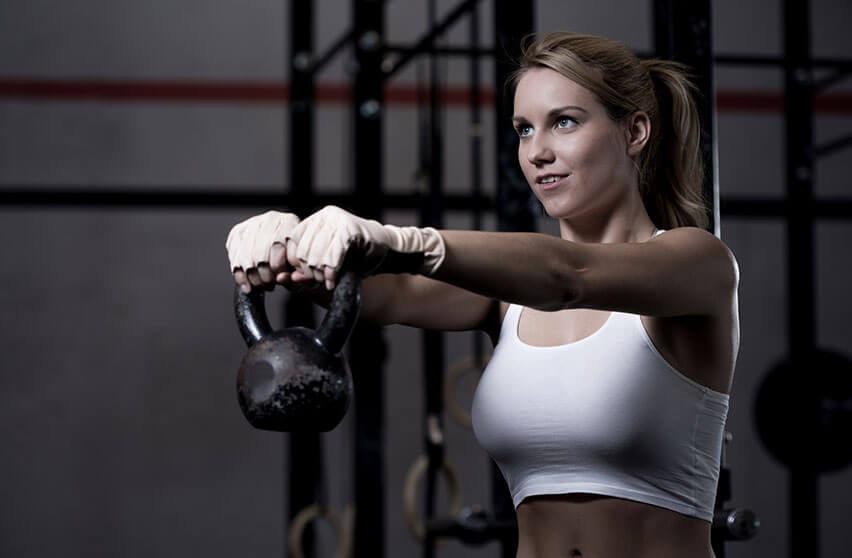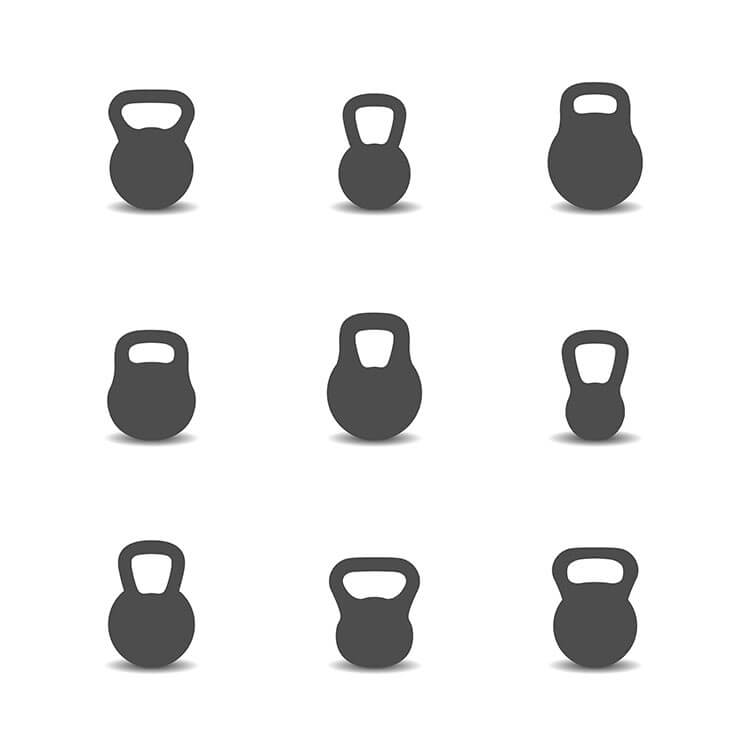What is a kettlebell?

Kettlebell training has become increasing popular over the last ten years, and it’s no surprise why. The below chart shows the interest over time for the term “Kettlebell” in Google. As an aside, most of those peaks you see are the January months when people are typically more motivated due to New Year’s resolutions and almost all fitness searches have the same pattern.
Fitness experts all over the world rely on kettlebell training programs to help clients burn fat, lose weight, and build lean muscle through movement. There are easy ways to incorporate a kettlebell into your home workout routine as well.
When you first hear of kettlebells, you’ll often have three questions:
What is a kettlebell?
What is a kettlebell used for?
What are the parts of a kettlebell?
This article will answer these questions and give you the guide to picking the perfect kettlebells for your home workout.
What is a kettlebell?
Named after its tea kettle shape, a kettlebell is a dumbbell weight that is round at the bottom and has an arched handle at the top. They began as counterweights used to balance heavy loads during shipping, and have since been altered for fitness use. They come in a variety of weights for home and gym use, and can be used for a variety of exercises.
Originally used by Russian farmers to demonstrate their strength, kettlebells are now used for weightlifting competitions and regular fitness routines.

Kettlebells may be old, but they are not even close to being outdated! Kettlebells were originally used in the 1700’s in Russia as a way to weigh crops. Legend has it that farmers would swing the primitive kettlebell in their free time. As more farmers started using kettlebells for fun and fitness, there began to be competitions featuring juggling and other difficult tricks!
In the 1900’s, kettlebells began to be used by militaries throughout Russia and Europe as a way to increase functional strength and flexibility. The effects of kettlebells soon became known worldwide. Today, they can be seen everywhere from home gyms in the suburbs to competitions around the world!
The kettlebell hasn’t changed much in its long history, but new moves and routines have been created to get the most out of this incredible piece of equipment. If anything, the kettlebell has proven itself throughout history as one of the most useful and downright fun additions to a workout routine! It can be stored virtually anywhere, used indoors or outdoors, and it works as a static weight or as a fluid item for swings and more.
What are kettlebells used for?

The unique shape of the kettlebell allows the mass to extend further than the hand, making it great for fluid motions. A typical kettlebell workout uses moves that engage the whole body, mimicking the work of a farmer. Moves designed to use the same muscle groups as shoveling, plowing, and lifting bales of hay were done with kettlebells to build muscle. Nowadays they are used everywhere from just getting in shape for the first time, or elite athletes trying to reach their peak performance, to physical therapy patients and everything in between.
What are the components of a Kettlebell?

Kettlebells are traditionally made of cast iron, and most are covered with a coating to soften the outside to reduce injury or floor damage. Some newer models are made of vinyl to lessen the cost to buyers. There are weights ranging from 5 pounds to over 100 pounds for extreme weightlifters. The exact shape of the handle of each kettlebell will differ from company to company. So how do you decide what kettlebell to buy to begin your workout routine?
Kettlebell weight: People typically start with 18 lbs for women and 35 pounds for men, however, there are certain moves that might require a lighter kettlebell, and others that might not be as challenging. These may seem too light or too heavy when compared with your current workouts, but remember that the fluid movements of kettlebells are very different from other muscular exercises. You may be able to handle far more weight than you think. On the other hand, a lighter weight with a kettlebell can pack a greater punch than the same weight as a dumbbell.
Material and handle: While the weight will be made of either cast iron or vinyl, there are many options for the covering of a kettlebell. Look for a covering that will not slip out of your hands while performing quick moves, but make sure it isn’t so rough that it will damage your hands. You should get your hands on any kettlebell before buying to make sure it feels right in your hand. Everyone may have a different opinion about this, so find what you prefer.
Handle shape: Aside from the material of the handle, the shape of the handle needs to suit your hands as well. Make sure you can hold the kettlebell from the top of the handle and the sides (the “horns”) comfortably. If your hands don’t fit well, try another brand with a different size handle. Again, make sure that it works for you individually, regardless of other people’s favorites.
Clear labelling: Any set of kettlebells should be clearly labelled to avoid confusion and injury. Make sure your kettlebells have a highly contrasted color to show the weight of each kettlebell.
Follow the kettlebell buying guide, as well as the other advice on this blog, to find the perfect kettlebell for your home workout.
There is definitely a growing community of people who have grown to love the fantastic and versatile kettlebell for kettlebell workouts. Welcome and we hope you get the most out of kettlebell training!
